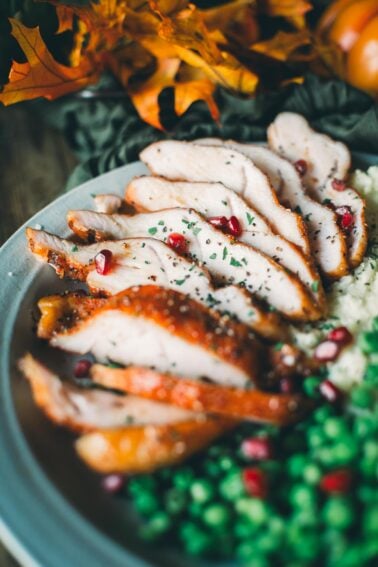Great cooking often begins long before the pan gets hot. How you handle meat—how you thaw it, season it, cut it, and even rest it—can make the difference between a meal that’s tender and flavorful and one that falls flat. Yet many home cooks make the same quiet mistakes without realizing it, sabotaging their steaks, roasts, and chops before they ever reach the table. The good news: these missteps are easy to fix, and once you know what to avoid, every cut of meat has the potential to shine.
1. Not Allowing Meat to Thaw Properly

One common mistake made by many home cooks is not allowing their meat to thaw properly before cooking. When you cook partially frozen meat, the outside can become overcooked before the inside has even started to warm up, resulting in unevenly cooked and often tough meat.It’s best to thaw meat in the refrigerator, which allows it to defrost at a safe and steady rate. This method can take a while, so be sure to plan ahead. If you’re in a rush, you can also use the defrost function on your microwave, but be careful not to start cooking the meat, which can happen if it’s left in too long. Remember, safe and effective thawing is essential for juicy and delicious meat.
2. Over-Marinating Your Meat

Marinades can add a great deal of flavor to your meat, but too much of a good thing can be detrimental. Over-marinating your meat can result in a mushy texture and overpowering flavors. The acids in the marinade break down the proteins in the meat, tenderizing it, but if left too long, they can start to cook and ruin the meat.Different meats require different marinating times. As a general rule, fish and seafood should only be marinated for 15-60 minutes, chicken and pork for 2-12 hours, and beef and lamb for 2-24 hours. By marinating your meat for the appropriate amount of time, you can ensure that it’s flavorful, tender, and not overly acidic.
3. Neglecting to Season Your Meat

Seasoning is key to bringing out the natural flavor of your meat. However, some cooks either forget to season their meat or don’t use enough, resulting in bland and uninteresting dishes. Avoid this mistake by generously seasoning your meat before cooking, and remember to taste and adjust the seasoning as needed during the cooking process.Common seasoning mistakes include using too much salt, not using enough, or forgetting to season at all. To avoid these errors, always season your meat before cooking, and remember to taste your food as you go. A well-seasoned piece of meat should be flavorful without being overly salty.
4. Cooking Meat at the Wrong Temperature

Cooking your meat at the wrong temperature can result in a tough, dry, or undercooked meal. It’s important to understand that different cuts and types of meat require different cooking temperatures for optimal tenderness and juiciness. For example, a thick steak will need a high temperature to create a nice sear on the outside, while still keeping the inside tender and juicy.Invest in a good meat thermometer to ensure your meat is cooked to the right temperature. This tool can help you avoid undercooked or overcooked meat by providing an accurate reading of the meat’s internal temperature. By knowing the right temperature for your specific cut of meat, you can ensure a perfectly cooked meal every time.
5. Cutting Meat Along the Grain Instead of Against It

The way you cut your meat can significantly impact its tenderness. Cutting along the grain, or in the same direction as the muscle fibers, can make your meat tough and chewy. Instead, always make sure to cut against the grain. This shortens the muscle fibers and makes the meat easier to chew and digest.For example, when slicing a steak, look for the direction of the muscle fibers or the ‘grain’ of the meat. Then, make sure to slice across these lines, not parallel to them. By following this tip, you can ensure that your meat is as tender and delicious as possible.
6. Not Resting Meat After Cooking

Resting meat after it’s been cooked is a step that many people skip, but it’s crucial for a juicy and flavorful result. When you cook meat, the heat drives the juices towards the center. By allowing the meat to rest before cutting into it, you give these juices a chance to redistribute throughout the meat. This results in a juicier, more flavorful dish.As a general rule, smaller cuts of meat like steaks and chops should rest for about 5-10 minutes, while larger cuts like roasts should rest for 10-20 minutes. During this time, the meat continues to cook slightly, or ‘carry-over cook,’ so take this into account when determining when to remove your meat from the heat.
7. Using the Wrong Tools for Meat Prep

Using the wrong tools can make meat preparation more difficult and can even affect the quality of your meal. For example, a dull knife can make it hard to cut your meat properly, affecting its presentation and even its cooking time. Similarly, using a small pan for a large piece of meat can result in uneven cooking.Invest in a set of good-quality kitchen tools, including a sharp chef’s knife and a set of sturdy pans. A meat thermometer is also a valuable tool for ensuring your meat is cooked to the correct temperature. By using the right tools for the job, you can make your meat preparation process easier and more efficient, resulting in better meals.
8. Ignoring the Importance of Meat Quality

The quality of your meat plays a significant role in how your dish turns out. Low-quality meat can be tougher, less flavorful, and less enjoyable to eat. Plus, high-quality meat is often more ethically and sustainably produced, which is better for the environment and for the animals.When shopping for meat, look for cuts that are a vibrant red color with marbled fat. Avoid meat that is grey or has a bad smell, as this is a sign of spoilage. Remember, investing in high-quality meat is one of the easiest ways to improve the taste of your dishes.
9. Overcrowding the Pan When Cooking

When cooking meat, especially when searing or sautéing, it’s important to avoid overcrowding the pan. When there are too many pieces of meat in the pan, the heat doesn’t distribute evenly, causing some pieces to cook faster than others. Additionally, overcrowding can cause the meat to steam rather than sear, resulting in a lack of flavor.To avoid this issue, make sure each piece of meat has enough space in the pan. If necessary, cook your meat in batches to ensure that each piece is cooked evenly and properly. This may take a bit longer, but the result will be worth it: perfectly cooked, flavorful meat.
10. Not Drying Meat Before Cooking

Excess moisture can prevent your meat from browning properly, which is essential for locking in flavor. Before you cook your meat, pat it dry with paper towels to remove any surface moisture. This simple step will help you achieve a beautiful sear and a deliciously flavorful crust.Remember, water and oil don’t mix, so any moisture on your meat will cause the oil in your pan to splatter, which can be dangerous. By drying your meat, you can ensure a safer, cleaner, and more flavorful cooking experience.
11. Relying Solely on Cooking Times

While recipes often provide cooking times, these are only estimates and can vary based on different factors, such as the exact size and thickness of your meat, and how your oven or stove heats. Relying solely on these times can result in undercooked or overcooked meat.Instead, use a meat thermometer to determine when your meat is done. This is the most reliable way to ensure it’s cooked to the correct temperature, which is key for both safety and flavor. By using a meat thermometer instead of relying solely on cooking times, you can ensure a perfectly cooked meal every time.
Hungry for more? Subscribe to our newsletter and become part of the world’s best meat community! From grilling tips to smoky secrets, we send you the best recipes, guides, and expert advice to master every cut.













